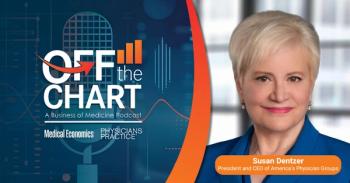
Reform, Physician Shortage Elevating Role of Physician Assistants
As the physician shortage intensifies, so will the roles and responsibilities of physician assistants (PAs).
As the physician shortage intensifies, so will the roles and responsibilities of physician assistants (PAs) in private practices and other healthcare systems.
“As people look at the efficiencies of teams, it’s pretty clear that it’s best to use doctors for the parts of healthcare that require physician-level training and scope,” Ann Davis, senior director for state advocacy and outreach at the American Academy of Physician Assistants, told Physicians Practice. “But, the reach of a physician can certainly be expanded - and the ability for a physician to take care of more patients well can be expanded - by thoughtful team creation. PAs of course are the utility infielders of the healthcare team.”
Here’s why.
Quality and Access: “PAs help alleviate some of the routine work for physicians to help maximize office hours and treat more patients,” Stephen Hanson, a practicing PA for more than 30 years and a fellow Practice Notes blogger, told Physicians Practice via e-mail. At his healthcare system for instance, he is responsible for the “lion’s share” of administrative work in the surgical unit, from routine rounding to routine hospital procedures. That frees up the physician to focus on what he loves - surgery, Hanson said.
Of course, when the physician focuses solely on tasks requiring a physician license that also improves the quality of patient care provided.
Cost: As pressures to reduce healthcare spending heats up, PAs can help, said Hanson. One reason is prevention will to take a front seat in patient care. Healthier patients, of course, are less costly than sick patients. “PAs are made to order for [prevention], with their experience and education in general medicine,” he said.
Coordination: As practices and other health systems transition to new models of care such as Patient-Centered Medical Homes, PAs will play critical roles, said Davis. “There’s room for everybody here but let me tell you that in coordination, PAs can not only sort of evaluate the problem, they can also order the test and then make the prescriptions - it makes them very useful in extending the patients care.”
Already, practices and hospitals are looking to other healthcare systems to determine the best practices when it comes to utilizing PAs within healthcare teams, Davis noted.“I think PAs will be able to do more, not because they’re not doing a lot already, but because I think some of the best practices will travel faster because the need is greater.”
Still Hanson said, the benefits PAs can bring to health systems as far as improving patient access to quality care, reducing cost of care, and improving care coordination, may - in some cases - be hindered by regulations. “We have come a long way in my 31 years, but we have a long way in which to go,” he said.
Such regulations include state-by-state restrictions on physician-PA supervision, such as the number of PAs one physician can supervise.
These regulations should be determined not at the state level, but at the practice level by physician delegations, and credentialing decisions should be made by the hospital or health system, said Davis.
“Removing old laws that had a list of things that PAs could do - that’s just yesterday’s news -that’s gotta go,” she said. “You want people to be able to incorporate new best practices rapidly, and for the physician to say ‘Hey … let’s reorganize and I want you to take on this, this, and this.' The system demands it.”
Newsletter
Optimize your practice with the Physicians Practice newsletter, offering management pearls, leadership tips, and business strategies tailored for practice administrators and physicians of any specialty.








